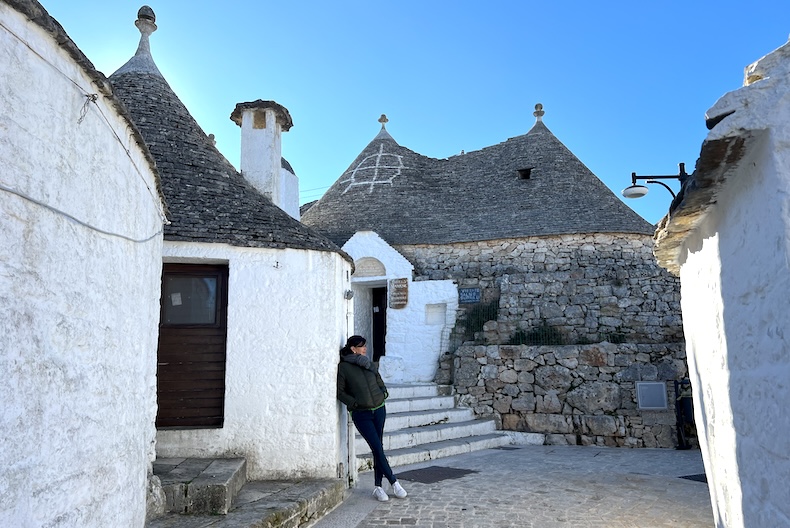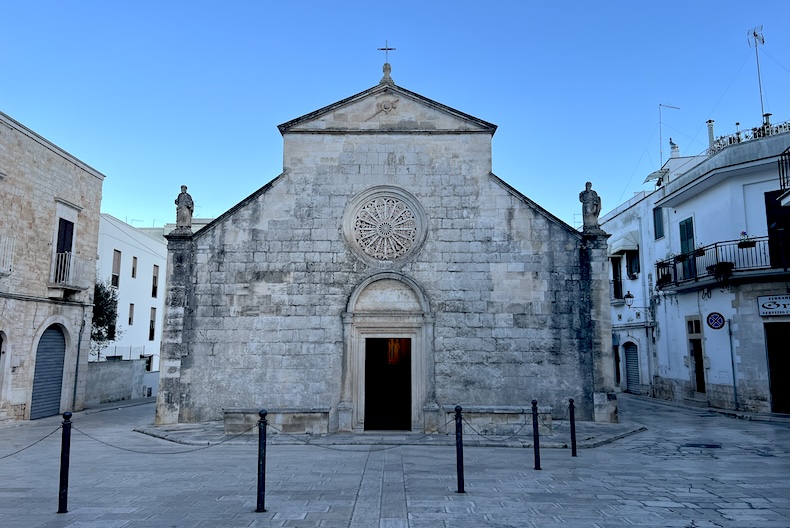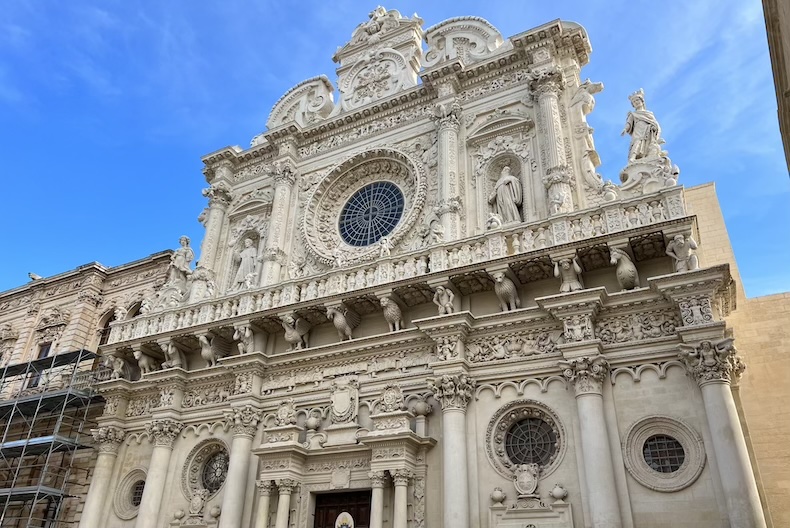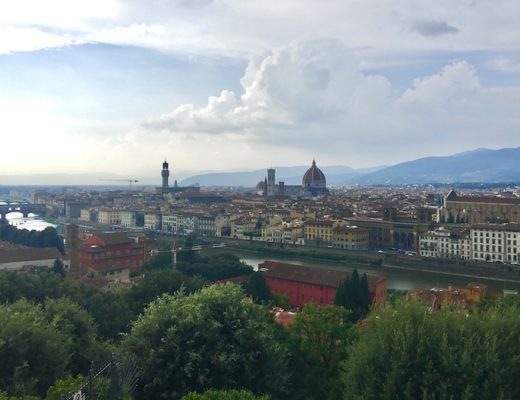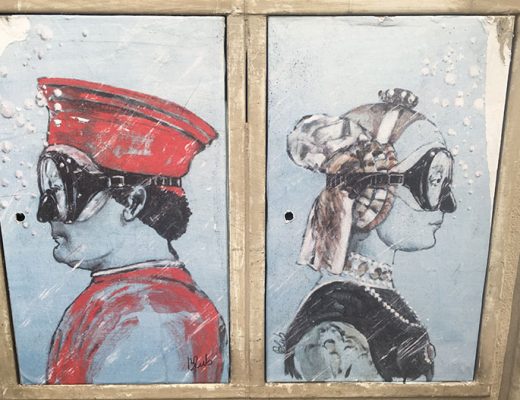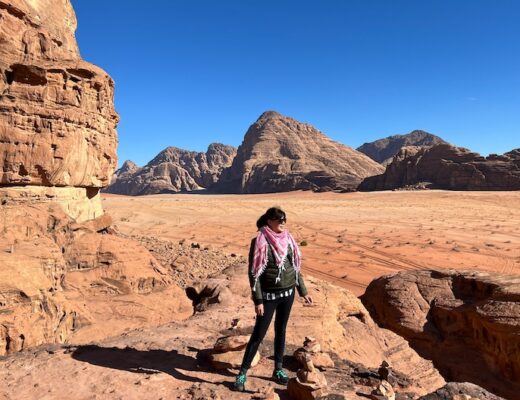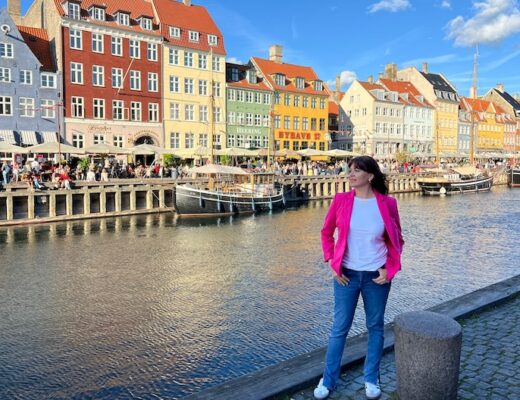In recent years, we have seen that Puglia is becoming increasingly popular among travelers. There is more advertising and people share their experiences in this region of southern Italy on social media, especially in Alberobello, the magical village with houses known as “Trulli”. What is so special about the ‘Heel of Italy’? We visited this region for a few days and I would like to share my experience with you.
What to see in Puglia?
First, you have to know that this region is further away from the typical places you visit, you literally have to travel to the heel of the boot that represents the map of Italy. Although you can get to Bari, its capital, by train or plane, it is best to rent a car to be able to freely explore the towns and beaches.
We flew to Rome and rented a car there. We decided to base ourselves in Bari, Lecce and Matera (although this last city is already in the Basilicata region, very close to Puglia, but I will talk about it in another post) and spend some time visiting the towns we had chosen. As we were not traveling for that many days and right in the middle of winter, this reduced the time we would have spent at some beaches.
Bari
Bari is a small city located on the Adriatic Sea, which can be easily explored by foot. We stayed in the Murat area, which is full of life, especially the Via Sparano, where there are many shops and restaurants. In this same area is the Corso Cavour, where you can see the Teatro Petruzzelli and the Lungomare, which is a very nice promenade along which you can walk to the Bari Vecchia.
At the end (or beginning) of the Lungomare, before reaching the old town, we came across a small fish market where we tried something fresh from the morning’s catch. Finally, we arrived at the old town, which is charming, with its narrow streets and old houses. There, you have to see the Cathedral of Saint Sabinus, the Castello Normanno-Svevo and above all the Basilica of Saint Nicholas, the most important one, where the relics of the patron saint of sailors, travelers and children are kept, in short, the one who inspired Santa Claus!
Why are the relics of St. Nicholas in Bari, if he was from Myra, Turkey? When he died in the 4th century, his remains rested in Myra, but in the 11th century, they were transferred to Bari by Italian sailors, to protect them from the Muslim invasion of the Seljuq dynasty.
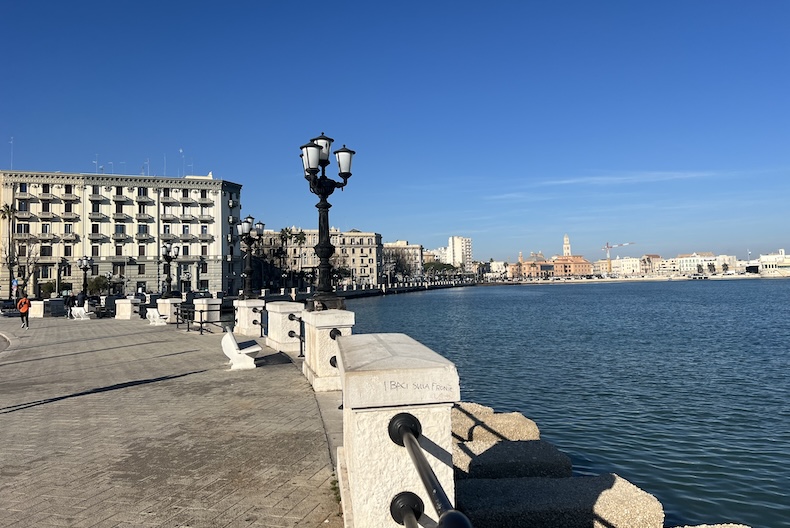
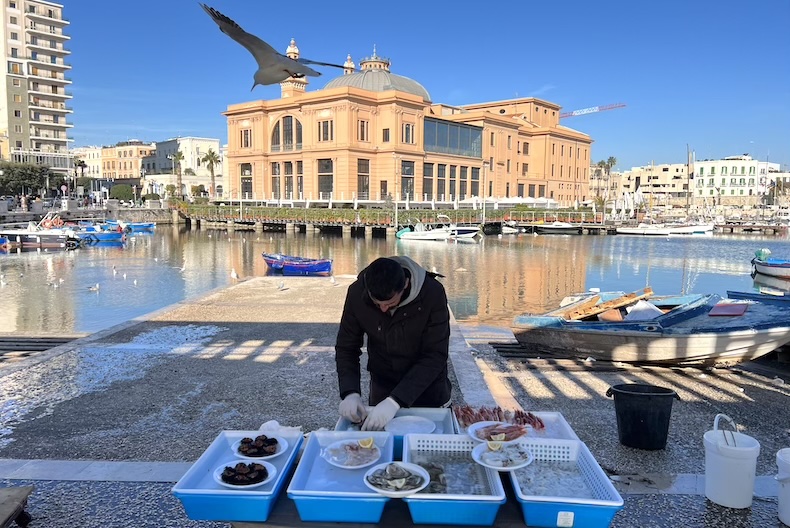
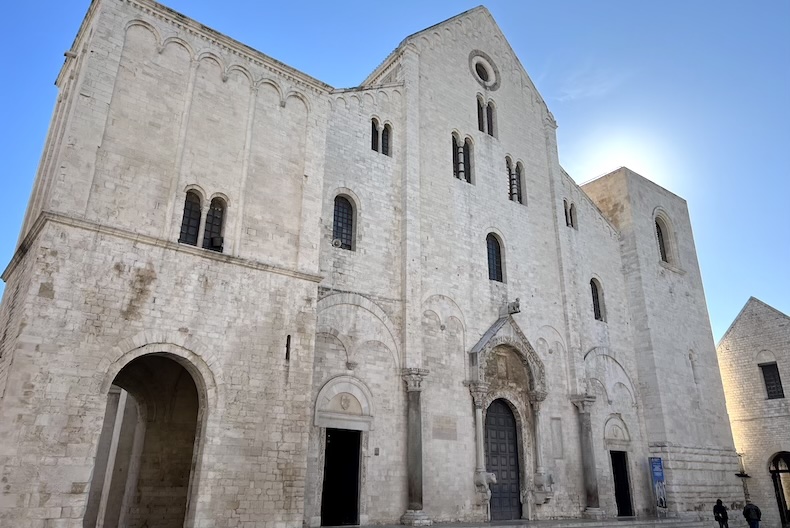
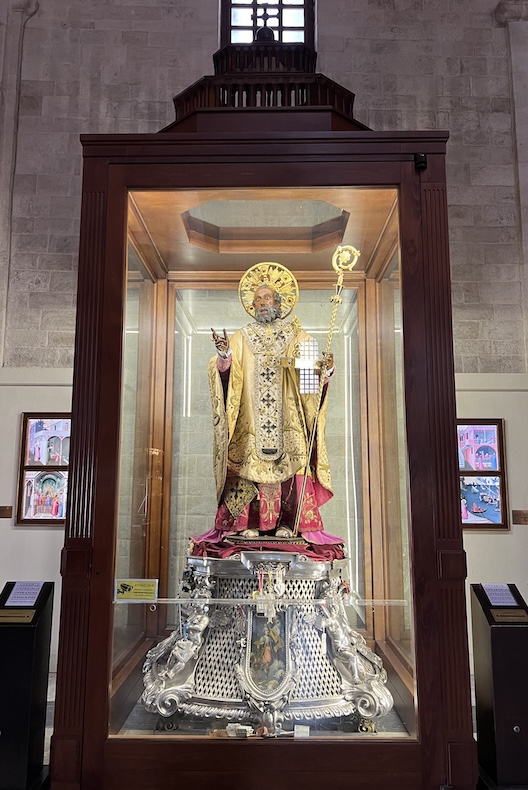
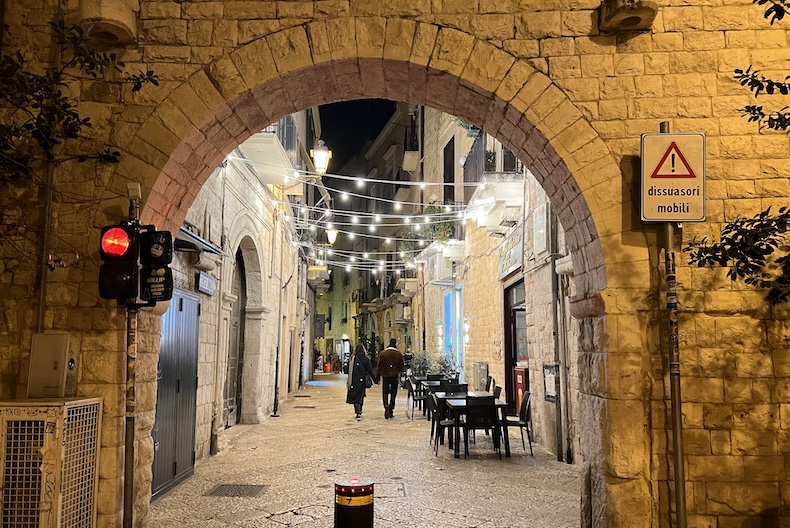
Polignano a Mare
Very famous for its beach, this small town fascinated me, with its stone arches and white houses, where you could find niches dedicated to saints, alleys and balconies to get wonderful views of the sea with its cliffs, as well as the small town beach that invites you to take a dive into the crystal clear water (but it was cold). One of the important spots is the sculpture of the prodigal son of the city, Domenico Modugno; if he doesn’t ring a bell, you have surely sung his most famous song: Nel blu, dipinto di blu (volare oh oh oh).
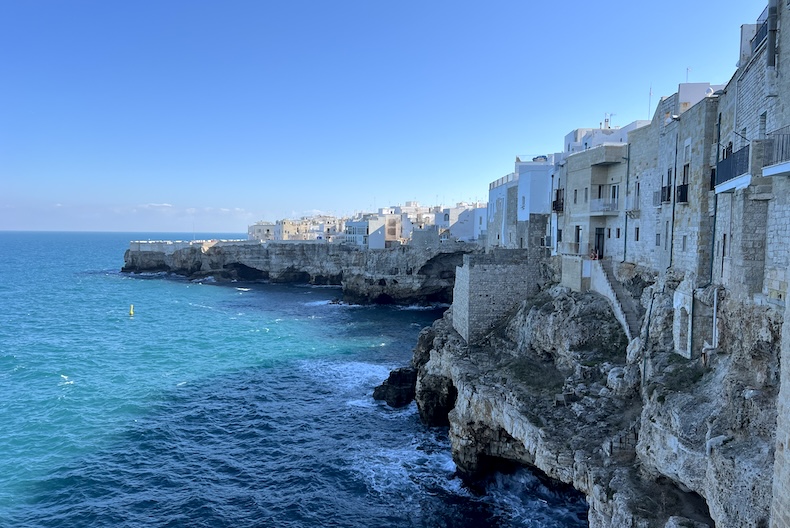
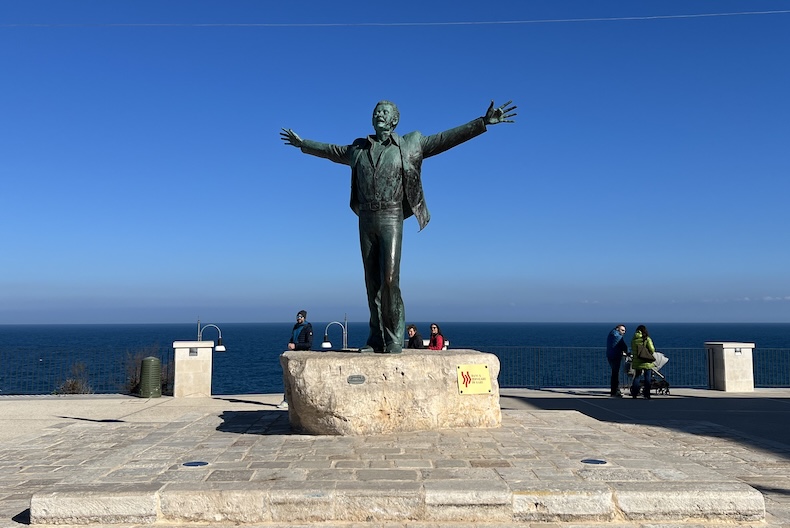
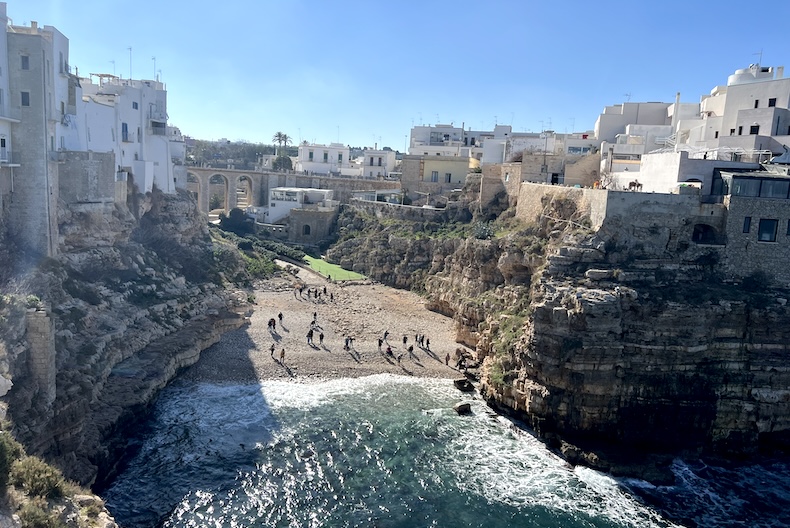
Alberobello
At last, we reached the cherry on the cake or at least what has become the most popular place on Instagram and TikTok: Alberobello, the town known for its “Trulli” or circular white houses with conical roofs.
Even before you reach Alberobello, you will pass by one or another Trullo (singular name) on the road, but most houses with this type of construction are concentrated in Alberobello itself, which is why it was declared a World Heritage Site by UNESCO.
Trulli were built in this way in the 14th century, as these lands were under the Kingdom of Naples and the person who controlled them, the Count of Conversano, did not want to pay land taxes for his peasants and the land where Alberobello is now located was classified as uninhabited. Therefore, they built these types of houses so that they could be easily destroyed and reused later.
Best is to walk around, go up and down its streets to admire them better. Among the most notable are the Trullo Siamese (according to legend, divided by two brothers who fell in love with the same woman), the Trullo Sovrano, the largest, which can also be visited, the Rione Monti, the Belvedere Santa Lucia viewpoint and St. Antony’s Church.
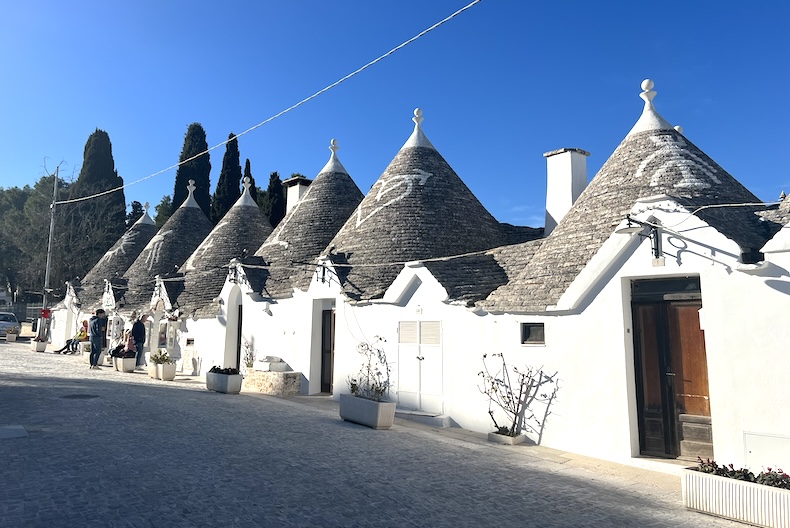
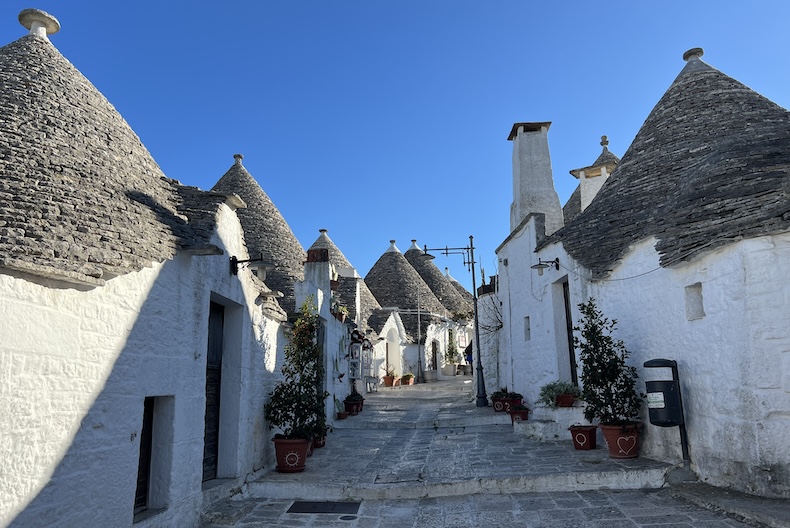
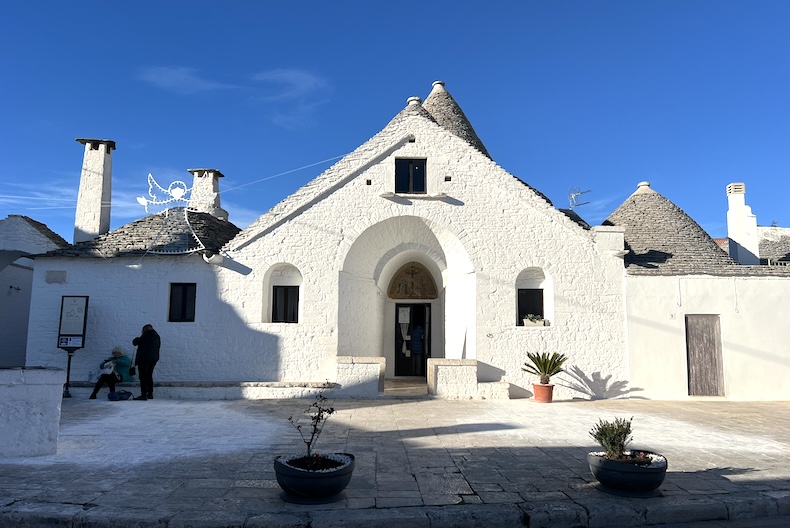
Locorotondo
One of the most popular white villages on the route, which we passed through quickly, but as we were going in winter and during the low season, we found almost everything closed and very quiet. Although that does not take away from how picturesque and beautiful it is. The advantage of traveling during low season is that you find many places empty, but that sometimes also becomes a disadvantage because, for example, this place was too desolate for us. I would have liked to see it with more spirit.
Martina Franca
We didn’t plan on visiting it, but a person from Puglia Tourism recommended it to us at FITUR and it resulted to be a well-kept gem. Its squares with baroque buildings, churches and little streets are to fall in love with. I would have loved to have had more time for this town (make a note of it).
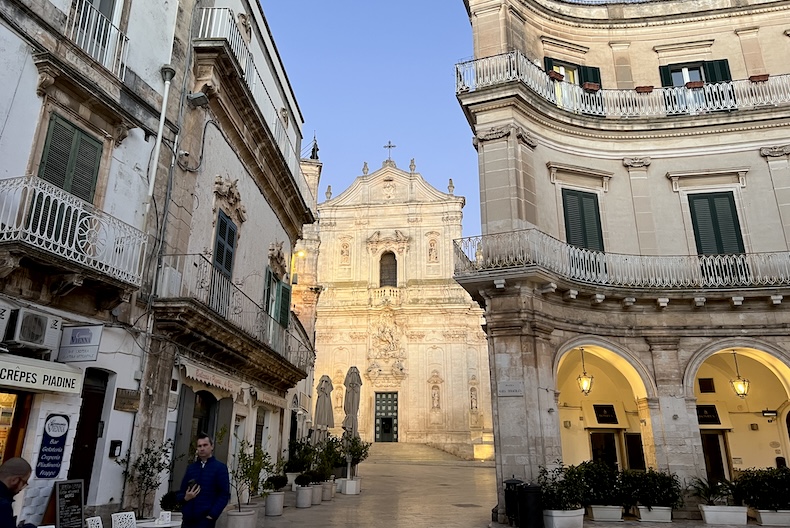
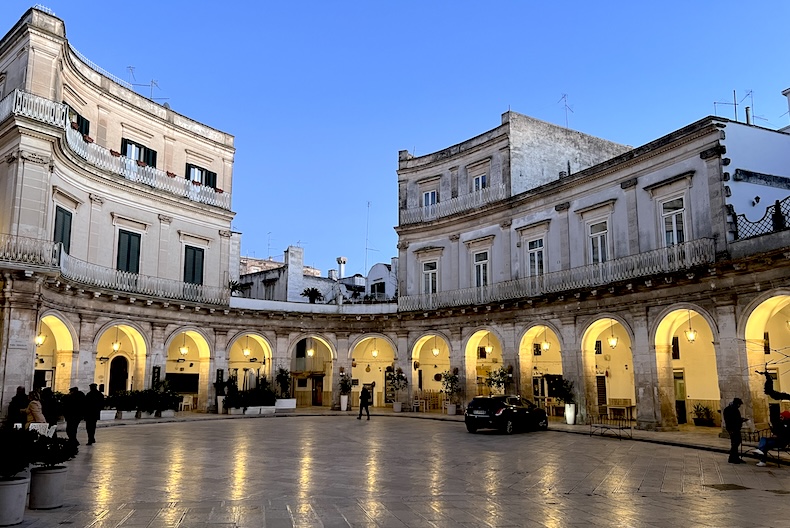
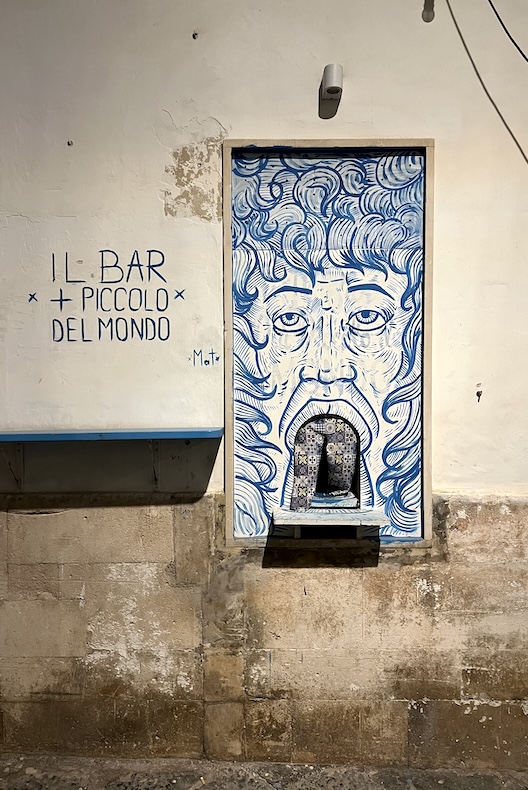
Lecce
We finally arrived in Lecce and I was positively surprised. At night, it has a very lively atmosphere (maybe it was the beginning of the carnival), but I liked that it had a very local feel. You have to see the Roman Amphitheater in Piazza Sant’Oronzo, the Castello Carlo V, the impressive Basilica di Santa Croce, the Piazza del Duomo and get lost in its streets (the centre is quite small), to find beautiful buildings and to hang out in its bars and cafés. I definitely recommend spending a night here – if possible on a weekend.
What is the best time to visit?
We visited during the low season, which has its advantages because you don’t have seas of tourists and you can enjoy the more local, Italian atmosphere. But the disadvantage is that many places close and it is not as lively as during the higher seasons. Above all, you have to keep in mind that if you want to go to the beach, you won’t be able to go into the sea because it is too cold.
What food to try?
We focused mainly on famous pastas such as orecchiette (ears) in their various sauces, one of the most famous is with cime di rapa, another one with ragù di braciole. As well as strascinati, vegetables and legumes, octopus sandwich, fresh oysters, foccacia barese, panzerotti (delicious stuffed empanadas), among others. Be careful if you order meat because one of Puglia’s specialties is horse meat (we didn’t try it).
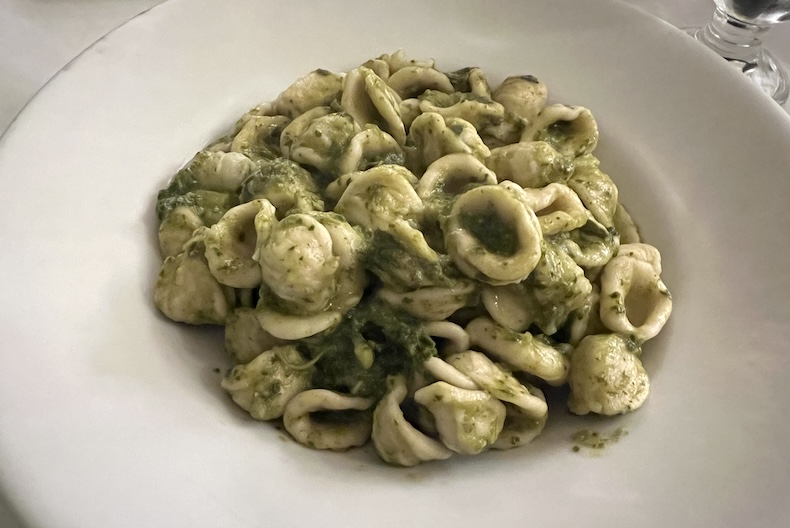
Is it worth it?
Absolutely! Puglia is gaining ground and will continue to gain momentum, as it is a beautiful region and above all, why not get away from the classics of Italy – especially if you already know them – to go and explore something new like this region in the south of Italy?
If you want us to design and organize your trip to Europe through our travel agency Tripdreaming, contact me at silvia.lucero@tripdreaming.com. For editorial questions, write to silvia.lucero@latrotamundos.com.

